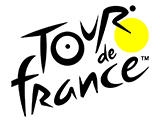- Stage town for the 4th time
- Commune in Jura (39)
- Population: 8,100 (Champagnolais and Champagnolaises)
Due to its geographical location, the “Pearl of the Jura” has generally produced Nordic skiers, such as Sylvain Guillaume, an Olympic medallist in the Nordic combined, and Quentin Fillon-Maillet, the five-time Olympic medallist in the biathlon in Beijing. The Tour first came here in 1937 for a team time trial won by the Belgian team of defending champion Sylvère Maes. In 1964, early on in his duel with Jacques Anquetil, Raymond Poulidor joined a breakaway on a stage from Champagnole to Thonon-les-Bains, forcing his arch-rival’s Saint-Raphaël team into frantic pursuit. The only finish at Champagnole, in 2020, was won by lone breakaway Søren Kragh Andersen.
CHAMPAGNOLE
Gallo-Roman and Merovingian Archaeological Museum
The Archaeological Museum was created in 1985 to house important collections from archaeological excavations carried out at that time in the vicinity of Champagnole. Its aim is to preserve and display collections that help visitors understand the history and evolution of the Upper Ain Valley region. This municipal museum is under the scientific and technical responsibility of the Jura Departmental Archaeology Conservation Service.
Saint-Cyr-et-Sainte-Julitte Church
Construction: 1755
Style: classical.
History: in this church, the tabernacle was built in 1764 and then demolished in 1793. It was replaced by a 17th-century altarpiece from the Ursulines of Poligny, purchased in 1792 after the convent was closed. In 1788, the church was deemed too small and was enlarged with two side aisles. The organ was built in 1721 by the organ builder Marin Carouge. It was first installed in the Dominican church in Poligny and only became the property of the church in Champagnole during the French Revolution in 1792. It was not installed until 1807 in the specially built gallery. It remains one of the jewels of the town's cultural heritage.
Listed as: Historic Monument in 1994.
Route des Sapins Little elves guide travellers along the Route des Sapins, from Champagnole to Levier, through one of the most beautiful fir tree forests in Europe, dotted with 19 tourist sites where you can discover its history, fauna, flora, unique features, exploitation, walks, viewpoints, etc.
Palladian Villa of Syam (6 km away)
Built in 1818.
History: a unique testimony to the life of the ironmasters, the Palladian villa is a treasure of neoclassical architecture built by its patron, Emmanuel Jobez. Respecting the rules of the art of Italian Renaissance architect Andrea Palladio, the house is built around a peristyle forming a theatre. The villa has retained its period furniture, creating a moving atmosphere that takes visitors on a journey through the centuries.
Special characteristics: visitors can admire a fabulous collection of papers dating from the early 19th century, which are in an astonishing state of preservation.
Listed as: Historic Monument since 1994.











